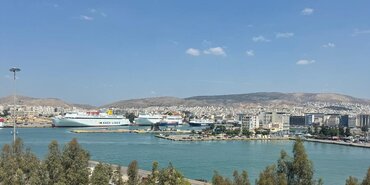The Challenges of the Illegal Charter Market for Aviation

By Melanie Daglish, Senior Aviation Underwriter at ITIC
The aviation industry is one of the most regulated industries in the world, with many professionals ensuring that operations run smoothly and, even more importantly, safely. However, illegal or ‘grey’ charter flights can considerably threaten this system as they operate outside any legal framework.
International Transport Intermediaries Club (ITIC) has provided professional indemnity (PI) insurance to its aviation members since 2014 and has made significant strides to grow its market share.
ITIC’s PI insurance covers aviation professionals for claims brought against them for losses suffered by their customers due to their negligence, error or omission. Even though PI insurance remains relatively uncommon in the aviation sector, it is gaining importance.
Over the past year, ITIC has seen an increase in claims arising from a variety of issues. One clear concern for air charter brokers is that they could be accused of deliberately or negligently arranging illegal or grey charters.
However, it is not only air charter brokers that may be affected; other ITIC members that could be drawn into disputes include aircraft brokers, aircraft surveyors and valuers, civil aviation authorities, aircraft registries and aircraft managers.
ITIC was part of a panel discussion, ‘The realities of new technology: can aviation adapt and transition?’ at the Isle of Man Aviation Conference in June 2023.
During the conference, illegal charter flights and the importance of adhering to rules, guidelines and legislation to counteract any breach of contract were discussed. Illegal charter flights are a massive risk to the aviation industry and professionals, and the aviation industry has adopted a zero-tolerance policy.
A flight for the transportation of passengers, for which remuneration or other valuable consideration is exchanged, is categorised as a commercial flight (Part- CAT). These aircraft must be certified and maintained per rigorous requirements. The easiest way to define a grey charter flight is that it is any unlicensed charter flight operation. Even though this is not a new phenomenon, these types of flights have come to the public’s attention in recent years.
Less stringent regulation and oversight apply to non-commercial flights, including those operated by private pilots for private, pleasure and business purposes.
The rationale, as noted by the Civil Aviation Authority (CAA) in its Consultation document, is that “in non-commercial aviation, the safety level of a flight is not determined by the giving of remuneration
or other valuable consideration; however, when money changes hands for a service, there is an expectation of a resultant level of safety standards being applied”.
However, there needs to be greater clarity between legally conducted cost-shared flights and illegal commercial charters.
Illegal charters do not comply with international commercial (or ‘Part-CAT’) transport standards. Part-CAT transport can involve the carriage of passengers, cargo or mail in return for some form of valuable consideration, usually hire or remuneration.
Grey charters include, but are not limited to, operating privately used aircraft for commercial purposes or pilots who do not have the necessary qualifications to fly at a specific time of the day or a particular type of aircraft. These all have implications for aviation insurance coverage and PI insurance.
No insurer can cover liabilities that arise from an unlawful act; however, the danger for the aviation professional is that they unwittingly become involved in an illegal charter.
If so, ITIC’s PI cover can help to defend their interests.
The danger lies in the grey areas, for example:
-
Where a pilot hires an aircraft to fly himself – does his payment of operating costs blur the lines?
-
Demonstration, delivery, and flights undertaken as part of a payment protection insurance (PPI); are these commercial flights or not?
-
Cost-sharing arrangements between passengers and pilots.
-
Private dry leases can often be the norm in corporate jet ownership. However, what happens if remuneration occurs between different company groups for using the jet?
-
Where the remuneration is promised to a registered charity, is this Part- CAT or not?
-
Where an aircraft is available for charter with suspect supporting regulatory documentation, such as an aircraft operating certificate (AOC) and/or airworthiness review certificate (ARC), should the air charter broker be required to check the validity of this?
As an example, ITIC handled a claim where an air charter broker arranged a jet charter on behalf of a charterer and contacted a co-broker with whom he had a long-standing relationship, and who held himself out to be representing the aircraft operators. On the basis that he could trust him, he transferred the money.
However, it then became known that the co-broker had no authority to arrange the aircraft’s charter; the aircraft was grounded and undergoing work and was in no condition to be chartered. Even though the air charter broker relied on the co- broker’s word, the air charter broker was arguably not negligent, and ITIC resolved the matter on his behalf. However, this case showed that it is vital that air charter brokers do their due diligence and ensure all is above board.
Air charter brokers want to avoid unintentionally arranging a grey charter, and the damage to your reputation would be significant if you did. The key is to be thorough in your due diligence, especially when dealing with new operators.
Look out for any shortfalls with the following checklist:
• What do you know about the aircraft? Have you seen a copy of an up-to-date Certificate of Airworthiness? (‘C of A’) Have you cross-checked the details of the Air Operator’s Certificate (‘AOC’) that applies to the flight with the issuing authority?
• Speak to your industry colleagues to find out if they have had any dealings with this operator. Does the operator have a track record in performing flights of a similar nature and/or operating a similar fleet of aircraft to the subject of your charter?
• Know the finer details of the charter that you are arranging. Are any special permissions required, and if so, have you obtained any written evidence that such permissions are either held by the operator or arranged before the flight? Seek legal advice whenever you are unsure.
• Keep a written file detailing all stages of the charter negotiation. If you were provided with information that you relied upon for your defence, it is essential that this can be presented to respond to any allegations.
• Make sure you are insured. No insurance policy will provide cover for an unlawful act. Still, where the arrangement of the grey charter was alleged to be an act of unintentional negligence, ITIC’s protection could include cover for legal costs incurred in defence of your position.
While the importance of a PI policy can easily be overlooked when navigating through the complex web of regulation and insurance requirements in the aviation sector, it remains essential, especially with the increase in grey charters. You can sleep a little easier knowing that you have support to manage and fund your defence should your liability be questioned.
- Date
- 21/09/2023





